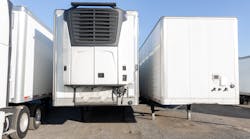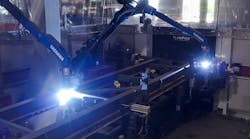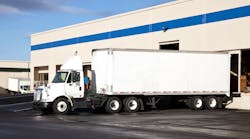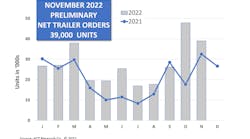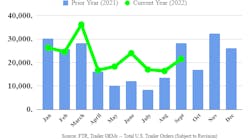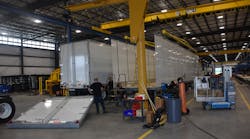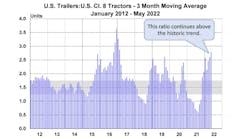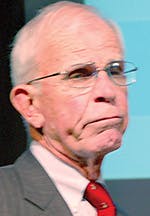THE aftermarket will experience a 3.3% increase in 2014, according to Stu MacKay, president of MacKay & Company.
“It’s not a hugely bullish outlook,” he said, “but recently it’s headed in the right direction.”
MacKay said the outlook in retail truck sales in 2014 revolves around replenishment, because “the operating population really isn’t changing.”
“There’s still a lot of uncertainty with the truck-buying public about where the economy really is heading, and as a result, they may be conservative in their truck purchases,” he said. “A recent survey of truckload carriers indicates that many are at a point where they do have to replace equipment. They may not be expanding the fleet, but they’re going to have to replace equipment because they have old stuff with fairly lousy fuel economy.”
Other factors impacting the 2014 aftermarket:
• Average vehicle age. “It might be about the same. If we’re simply replacing equipment and we’ve got those bulge years in 2005 and 2006, some of that stuff was going to go away and new stuff was going to replace it, but the average is certainly nine-plus years.”
• Component longevity. “It’s increasing and will continue on most components. It does selectively negatively impact parts demand because the frequency of repair and replacement gets stretched out. I think that’s good. It’s good news for the truck operator, your customers and your customers’ customer.”
• Average annual miles. “They’re up slightly at 0.5%. Vehicles moving is what consumes parts.”
• Fleet utilization. “It’s improving, but slowly. The forecast is for very slow improvement through 2018.”
• Pricing. “It’s forecasted to be 1.5% through the planning period, 0.3% below the long-term average. It’s tough to forecast. I think there are enough competitive pressures out there basically to keep a lid on it.”
In terms of medium- and heavy-duty trucks required
for each $100 billion of Truckable Economic Activity (TEA), he said the market is becoming more and more efficient. It is taking about 73% fewer Class 6-7 vehicles and 46% fewer Class 8 vehicles to move the same value of goods (nominal dollars). Therefore, fewer vehicles are required.
“Deregulation took a lot of equipment off the road and streamlined a lot of for-hire carrier activities,” MacKay said. “Sophistication, dispatchers, GPS, better terminal operations, consolidation of carriers, consolidation of private fleets. … It’s taking fewer trucks to do the same amount of work, and we think probably that trend will continue, so even though we’re generating more in the way of Truckable Economic Activity, it simply isn’t requiring the same level for new trucks coming into the operating universe. The good news from the customers’ perspective is not so good news when we’re taking a look at basically not only truck demand and sales, but pieces of the aftermarket as well.”
In Class 8 utilization, the forecast is for 84.4% this year, increasing every year to 84.9% in 2018.
“We’re still not back to 2003, and certainly not 2005 and 2006,” he said. “That’s when we were doing a couple of million new housing starts per year. We simply don’t have that demand. Let’s hope we don’t get there, because it messed up everything for several years. We’ll continue to see varying rates of utilization by location. Carriers and fleets will be highest and selected vocations like construction and agriculture will be significantly lower. But it’s a solid base from the utilization perspective.”
The market will grow from $23.46 billion this year to $25.16 billion in 2018.
“That sounds like a long time away, but it’s just four years,” he said. “There is growth. It is solid. We don’t have a forecast for recessions. There’s certainly nothing on the radar that give us any indication of a softening as we look out that far.” ♦
________________________
This story is based on presentations at the recent Heavy Duty Aftermarket Dialog sponsored by the Heavy Duty Manufacturers Association and MacKay & Company. For information about next year’s even contact HDMA (www.hmda.org) For more information regarding MacKay & Company, visit www.mackayco.com.
